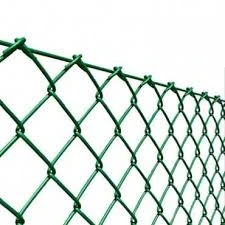The Symbolism of Razor Wire Fences in Prisons
In the landscape of modern correctional facilities, few images are as stark and evocative as that of a prison surrounded by razor wire fences. This ubiquitous feature, often viewed as a mere security measure, represents a complex interplay of fear, power, and control. Razor wire fences, designed to deter escapees and protect society from dangerous individuals, also serve as a powerful symbol of the broader issues surrounding incarceration, rehabilitation, and human rights.
The Symbolism of Razor Wire Fences in Prisons
The presence of razor wire conveys an assertion of authority. It starkly delineates the boundary between freedom and confinement, inviting reflection on how society defines justice and punishment. The visual impact of a prison surrounded by razor wire evokes feelings of fear and caution, both for those inside and outside its walls. It emphasizes the idea that these individuals are a threat to society, reinforcing their outsider status and, in many cases, dehumanizing them. This dehumanization raises ethical questions about the prison system, as it creates a clear division between the ‘us’ (law-abiding citizens) and the ‘them’ (the incarcerated).
prison razor wire fence

Moreover, razor wire fences reflect a punitive approach to justice, one that often prioritizes retribution over rehabilitation. In many societies, the prison system is perceived as a place for punishment rather than a space for personal transformation. Inmates are frequently subjected to harsh conditions that can exacerbate mental health issues and hinder their reintegration into society. As razor wire curves menacingly around prison walls, it symbolizes the entrapment of the human spirit, suggesting that individuals are forever marked by their past misdeeds and incapable of redemption.
Despite the apparent finality represented by razor wire, the conversation surrounding incarceration and its impact on society is evolving. Increasingly, advocates for criminal justice reform emphasize the need for restorative justice practices, which focus on healing and rehabilitation rather than mere punishment. Initiatives that promote education, mental health treatment, and skill development can transform prisons from places of despair into environments that foster growth and reintegration. In this light, the razor wire fence can also be viewed as a challenge—a call to action for society to dismantle outdated and ineffective punitive structures.
The global conversation about prison reform also highlights the importance of considering human rights. Critics argue that the harsh conditions represented by razor wire are inhumane and counterproductive. They advocate for systems that honor the dignity of incarcerated individuals, acknowledging that everyone possesses the capacity for change and redemption. The presence of razor wire thus serves as a reminder of the systemic barriers that exist not only to physical freedom but to social reintegration and acceptance in communities.
In conclusion, razor wire fences, while initially perceived as mere security features, embody complex issues related to power, control, punishment, and the potential for rehabilitation. They symbolize the division between freedom and confinement and challenge society to rethink its approach to justice. As discussions about prison reform continue to evolve, there is hope that one day, the sharp edges of these fences may give way to more compassionate approaches that prioritize rehabilitation over retribution and acknowledge the humanity of all individuals, regardless of their past.
















